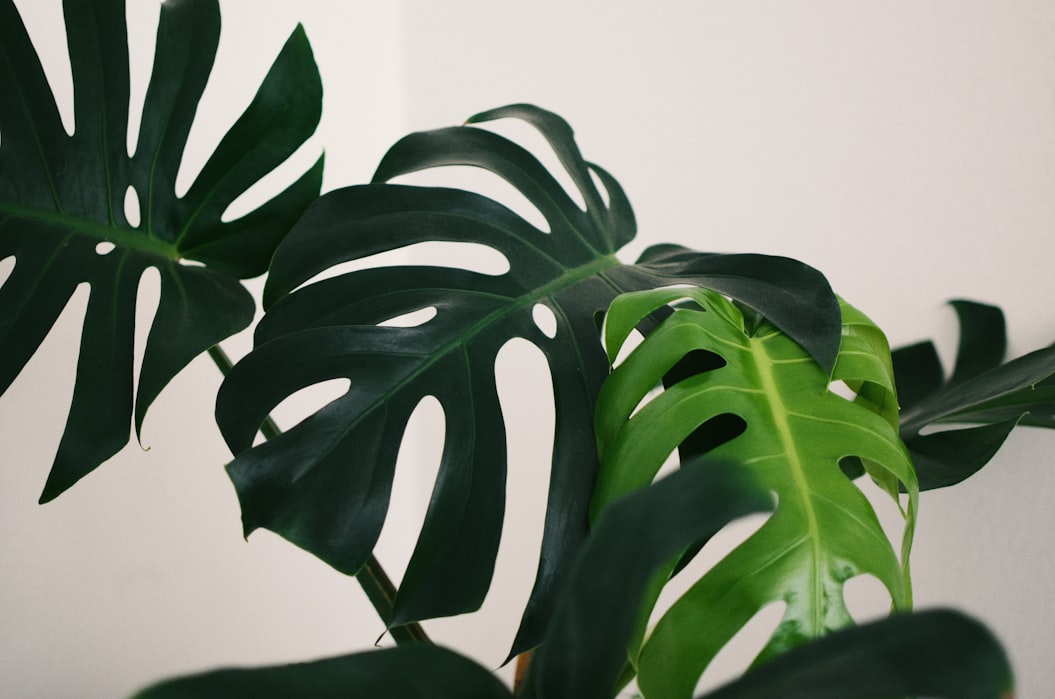
Monstera is a genus of 45 species of flowering plants in the arum
family, Araceae, native to tropical regions of the Americas. The genus
is named from the Latin word for "monstrous" or
"abnormal" , and refers to the unusual leaves with natural
holes that members of the genus have.
They are herbs or evergreen vines, growing to heights of 20 metres (66
ft) in trees, climbing by means of aerial roots which act as hooks over
branches; these roots will also grow into the soil to help support the
plant. Since the plant roots both into the soil and over trees, it is
considered a hemiepiphyte.[4] The leaves are alternate, leathery, dark
green, very large, from 25–90 centimetres (9.8–35.4 in) long (up to 130
centimetres (51 in) long in M. dubia) and 15–75 centimetres (5.9–29.5
in) broad, often with holes in the leaf blade. The flowers are borne on
a specialised inflorescence called a spadix, 5–45 centimetres (2.0–17.7
in) long; the fruit is a cluster of white berries, edible in some
species.
They are commonly grown indoors as houseplants. The best-known
representative of the genus, Monstera deliciosa, is also cultivated for
its edible fruit which tastes like a combination of banana and
pineapple.
Learn more about the species on Wikipedia